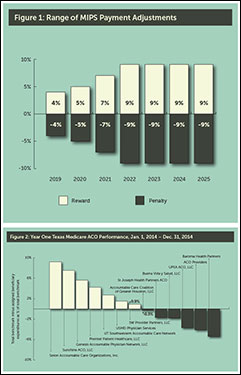After the SGR: Alternative payment models
After the SGR: Alternative payment models
By Jim Walton, DO, MBA
Last year the much maligned sustainable growth rate cost control scheme used by The Center for Medicare and Medicaid Services was repealed. If you are like me, you are celebrating this legislative victory, which took too many years to achieve. It is estimated that the cost of repealing SGR would be $150 billion over 10 years, because in the simplest terms, the SGR law attempted to control growth in Medicare costs by reducing the reimbursement rate for each unit of service provided by physicians. But as Joel White, president of the Council for Affordable Health Coverage reports, the SGR resulted in a reflexive increase in the volume of services as physicians attempted to maintain revenues. Where SGR failed, new strategies, rules, and regulations are now being rolled out for our profession.
As we enter the post-SGR phase of CMS’ attempt to control the burgeoning baby boomers’ impact on the total cost obligations of the federal budget, CMS is launching its new strategy, and we should all become familiar with its new terminology: “alternative payment models.” Through APMs, CMS and Medicare have made a commitment to value-based payments, incentivizing providers to adopt this model to promote better health outcomes at lower costs.
Some familiar examples of APMs include:
- Accountable care organizations
- Capitated and bundled-based payments
- Patient-centered medical homes
We must recognize that in the wake of the SGR repeal, Medicare has accelerated its transition away from fee-for-service as its sole mechanism for reimbursing physicians. To ease the transition for physicians, there is a narrow window of time in which Medicare will provide standard annual FFS rate increases of half a percent, from July 2015 through 2019. In the APM strategy, which will start in 2019, CMS has committed to rewarding physicians who achieve the transition to quality improvement and cost reduction in an APM contract.
Physicians and their Medicare patients who do not participate in APMs will be captured in a value-based financial reward program called Merit-based Incentive Payment System. Starting in 2019, the standard FFS rate increases will be replaced by MIPS, rewarding physicians based on how they perform on many of the now familiar quality measures outlined in the current quality payment programs. The MIPS will consolidate the following Medicare quality payment programs:
- Physician Quality Reporting System
- Electronic Medical Record Meaningful Use
- Value-based Payment Modifier
Figure 1 illustrates the potential financial rewards or penalties for physicians treating Medicare patients beginning in 2019.
As you can see, the range of MIPS-related payment adjustments begin at 4 percent in FY-19 and peaks at 9 percent a short four years later. The MIPS program differs from current PQRS and MU incentives that are “all or nothing.” The MIPS program also rewards those with exceptional performance (top quartile) with separate bonuses.
Important exceptions are:
> Physicians may opt out of the MIPS-related payment adjustments if they choose to be engaged in the APM programs noted above.
> Physicians choosing to participate in APMs and receive a substantial share of Medicare revenues through an APM will receive FFS bonus payments of 5 percent annually for six years.
> Physicians participating in APMs may also be eligible for shared savings bonuses (typically paid six months after the end of the calendar year).
In the immediate future, physicians will be weighing the decision to become more engaged in APMs. It is also fairly certain that commercial insurers will be following the same basic formula to control costs. With all this change where should we look for good news?
Recent reports reveal that several North Texas ACOs who contracted with CMS’ APM —Medicare Shared Savings Program—have reported good progress related to improving quality while reducing costs. These early reports suggest that DFW’s high-flying health care costs and utilization can be controlled, providing participating physicians with new financial reward opportunities. Figure 2 illustrates the progress.
We can and will succeed in this brave new world of APMs. RIP SGR!
Jim Walton, DO, MBA, is president and CEO of Genesis Physician Group, and he is president of the Dallas County Medical Society. He is board certified in internal medicine.
This article first appeared as the “President’s Page” in the Oct. 2015 issue of the Dallas Medical Journal. Read it here.
